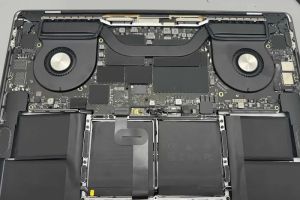How to Repair Computer Power Supply: A Step-by-Step Guide
If you've ever experienced your computer unexpectedly shutting off, or if your system isn't turning on at all, the problem might lie with your computer's power supply. A malfunctioning power supply is one of the most common hardware issues that can cause a computer to stop working. In this guide, I'll walk you through how to identify problems with your power supply and provide you with step-by-step instructions on how to repair it safely.

Action Computers Inc. -- Denver Location
2890 S Colorado Blvd F, Denver, CO 80222, USA
1. Understanding the Role of a Power Supply in Your Computer
The power supply unit (PSU) is a crucial component of any computer, responsible for converting electrical power from an outlet into the DC voltage that your computer’s components need to function. The PSU supplies power to critical components like the motherboard, CPU, hard drive, and graphics card. Without a working power supply, your computer won’t turn on or function properly.
Before diving into repairs, it’s important to understand how the PSU works. The power supply has multiple cables and connectors that distribute power to different parts of the system. If any of these connections are faulty or if the PSU is damaged, it could prevent your computer from starting or cause intermittent power issues. Common symptoms of a bad power supply include:
- Computer won’t turn on
- Frequent system crashes or freezes
- Unusual noises from the power supply
- Burning smells or overheating components
2. Diagnosing Power Supply Issues
Before attempting any repairs, it’s important to confirm that the power supply is indeed the problem. There are several ways to diagnose power supply issues:
- Visual Inspection: Inspect the power supply for any visible damage, such as burnt areas, broken components, or loose wires.
- Check Power Cable and Outlet: Ensure the power cable is plugged in securely and that the electrical outlet is working. Try plugging the power supply into a different outlet.
- Use a Power Supply Tester: A power supply tester is a device that allows you to check if the PSU is delivering the correct voltages to your computer’s components. This is a quick and efficient way to confirm if the power supply is faulty.
- Paperclip Test: If you don’t have a tester, you can perform a paperclip test. This test involves shorting the green wire to a black wire on the 24-pin connector to see if the PSU powers on without being connected to the motherboard. Make sure to take safety precautions when performing this test.
3. Preparing to Repair the Power Supply
If you’ve diagnosed that the power supply is indeed faulty, you’ll need to gather the proper tools and take safety precautions before beginning repairs. You should always ensure the power supply is unplugged before working on it. Additionally, using an anti-static wrist strap is recommended to prevent any static discharge that could damage sensitive components.
Here’s what you’ll need for the repair process:
- Flathead and Phillips screwdrivers
- Anti-static wrist strap
- Replacement parts (capacitors, wires, etc.) if necessary
- Soldering iron (for more advanced repairs)
- Multimeter or power supply tester
4. Replacing Faulty Components in the Power Supply
Sometimes the issue with the power supply can be fixed by replacing certain components, such as a blown capacitor or a faulty fan. Here’s how to approach this type of repair:
- Step 1: Open the Power Supply: Remove the screws from the power supply casing to access the internal components. Be careful when handling internal parts, as the PSU may still have residual power.
- Step 2: Inspect and Identify the Faulty Component: Look for damaged components such as bulging capacitors or a burnt resistor. In many cases, replacing a damaged capacitor will solve the issue.
- Step 3: Replace the Faulty Component: If you’re replacing a capacitor or other parts, carefully desolder the old component and solder in the new one. Ensure the replacement component matches the specifications of the original part.
- Step 4: Reassemble and Test: Once you’ve made the necessary repairs, reassemble the power supply and test it using a power supply tester or by reconnecting it to the computer. Make sure the PSU is providing the correct voltages to the system.
5. When to Replace the Power Supply Instead of Repairing
While some power supply issues can be repaired, there are cases where replacing the power supply is a better option. If your PSU is old and has experienced multiple failures, or if it has significant internal damage, it may be more cost-effective and safer to replace the entire unit rather than attempting to repair it.
Additionally, if your PSU is not providing consistent voltage, has excessive heat buildup, or makes unusual noises, it’s often a sign that it’s time for a replacement. In such cases, purchasing a new power supply will ensure that your computer runs smoothly and reliably.

Fix It Computer Repair
2638 Geranium Ln, Fort Collins, CO 80525, USA
6. How to Choose a Replacement Power Supply
If you decide to replace the power supply, choosing the right one is crucial for your system’s performance. Here are some key factors to consider:
- Wattage: Ensure the new power supply provides enough wattage to support all of your computer components, especially if you have a high-end graphics card or multiple drives.
- Efficiency: Look for a power supply with an 80+ certification, which indicates good energy efficiency and helps reduce power waste.
- Connector Compatibility: Verify that the new power supply has all the necessary connectors for your motherboard, CPU, graphics card, and other peripherals.
- Brand and Warranty: Choose a reputable brand with good customer support and a solid warranty for peace of mind.
Replacing a faulty power supply with a quality one ensures that your computer will function at its best, providing reliable performance for all your computing needs.





























